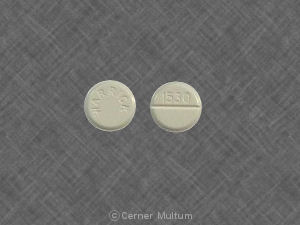Albuterol Disease Interactions
There are 5 disease interactions with albuterol.
Beta- 2 adrenergic bronchodilators (applies to albuterol) cardiovascular
Moderate Potential Hazard, High plausibility. Applicable conditions: Heart Disease, Hypertension, Hyperthyroidism
Adrenergic bronchodilators can stimulate cardiovascular beta- 1 and beta- 2 receptors, resulting in adverse effects such as tachycardia, palpitation, peripheral vasodilation, blood pressure changes, and ECG changes (e.g., flattening of the T wave; prolongation of the QT interval; ST segment depression). Direct stimulation of cardiac tissues is mediated by beta- 1 receptors and thus less likely to occur with beta-2-selective agents such as albuterol. However, beta-2-selectivity is not absolute and can be lost with larger doses. High dosages of these agents have been associated with precipitation or aggravation of angina, myocardial ischemia, and cardiac arrhythmias. Therapy with adrenergic bronchodilators should be administered cautiously in patients with sensitivity to sympathomimetic amines, hyperthyroidism, and/or underlying cardiovascular disorders such as coronary insufficiency, cardiac arrhythmias, or hypertension. The recommended dosages should not be exceeded.
Beta- 2 adrenergic bronchodilators (applies to albuterol) diabetes
Moderate Potential Hazard, Moderate plausibility. Applicable conditions: Diabetes Mellitus
Adrenergic bronchodilators may cause increases in blood glucose concentrations. These effects are usually transient and slight, but may be significant with dosages higher than those normally recommended. Large doses of IV albuterol (not commercially available in the U.S.) and terbutaline sulfate have been reported to cause exacerbation of preexisting diabetes mellitus and ketoacidosis. Therapy with adrenergic bronchodilators should be administered cautiously in patients with diabetes mellitus. Closer monitoring of blood glucose concentrations may be appropriate. Systemic adverse effects are minimized, but not abolished, by administration of these agents via oral inhalation.
Beta- 2 adrenergic bronchodilators (applies to albuterol) hypokalemia
Moderate Potential Hazard, Moderate plausibility.
Adrenergic bronchodilators may cause decreases in serum potassium concentrations, primarily when given by nebulization or intravenous administration. Although this effect is usually transient and does not require supplementation, clinically significant hypokalemia may occur in some patients, with the potential to induce cardiovascular adverse effects. The relevance of these observations to oral or oral aerosol/powder for inhalation therapy is unknown. Therapy with adrenergic bronchodilators should be administered cautiously in patients with or predisposed to hypokalemia.
Beta- 2 adrenergic bronchodilators (applies to albuterol) seizures
Moderate Potential Hazard, Low plausibility.
Adrenergic bronchodilators may cause CNS stimulation. Therapy with adrenergic bronchodilators should be administered cautiously in patients with seizure disorders. Systemic adverse effects are minimized, but not abolished, by administration of these agents via oral inhalation.
Levalbuterol (applies to albuterol) renal dysfunction
Moderate Potential Hazard, Moderate plausibility.
Levalbuterol is substantially excreted by the kidney, and the risk of toxic reactions may be greater in patients with impaired renal function. Care should be taken in dose selection in patients with renal impairment and it may be useful to monitor renal function.
Switch to professional interaction data
Albuterol drug interactions
There are 427 drug interactions with albuterol.
Albuterol alcohol/food interactions
There are 2 alcohol/food interactions with albuterol.
More about albuterol
- albuterol consumer information
- Check interactions
- Compare alternatives
- Pricing & coupons
- Reviews (389)
- Drug images
- Latest FDA alerts (6)
- Side effects
- Dosage information
- Patient tips
- During pregnancy
- Support group
- Drug class: adrenergic bronchodilators
- Breastfeeding
- En español
Related treatment guides
Drug Interaction Classification
| Highly clinically significant. Avoid combinations; the risk of the interaction outweighs the benefit. | |
| Moderately clinically significant. Usually avoid combinations; use it only under special circumstances. | |
| Minimally clinically significant. Minimize risk; assess risk and consider an alternative drug, take steps to circumvent the interaction risk and/or institute a monitoring plan. | |
| No interaction information available. |
See also:
Further information
Always consult your healthcare provider to ensure the information displayed on this page applies to your personal circumstances.


